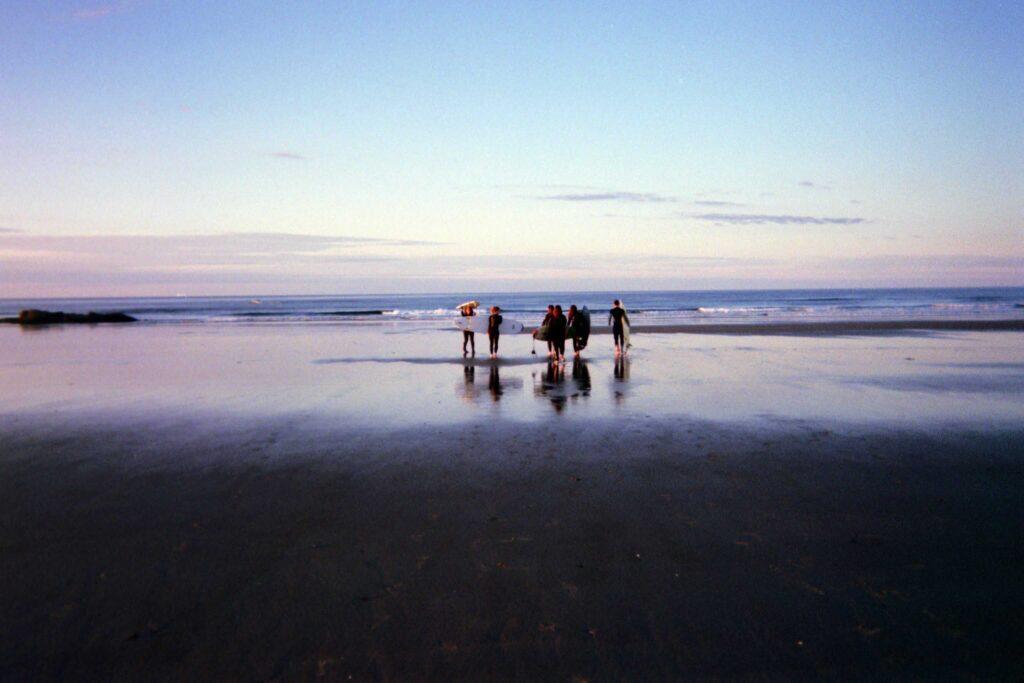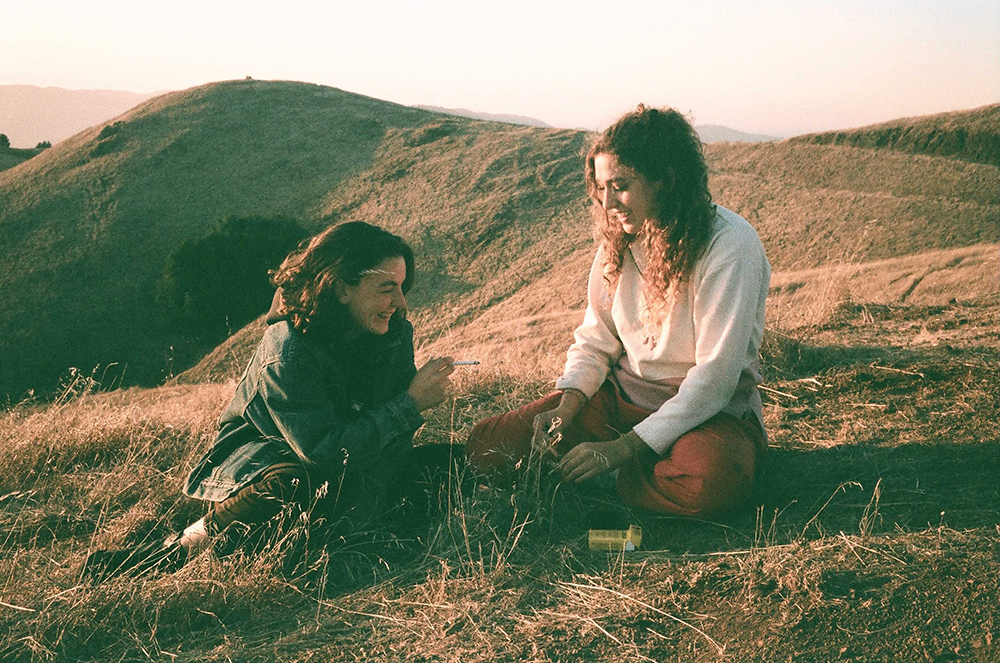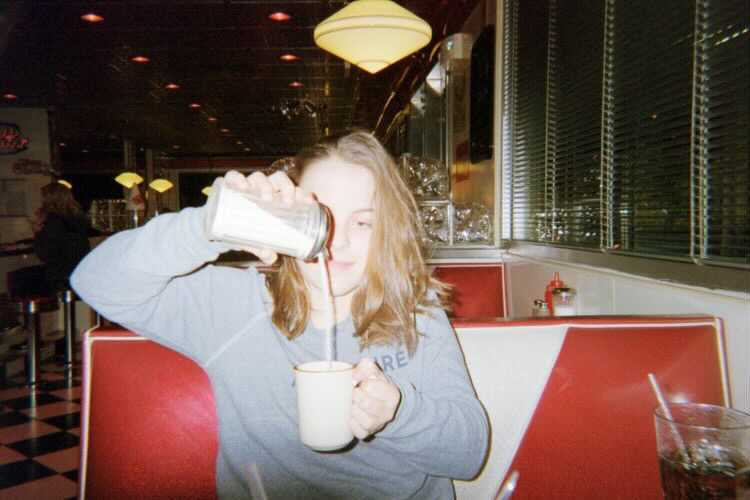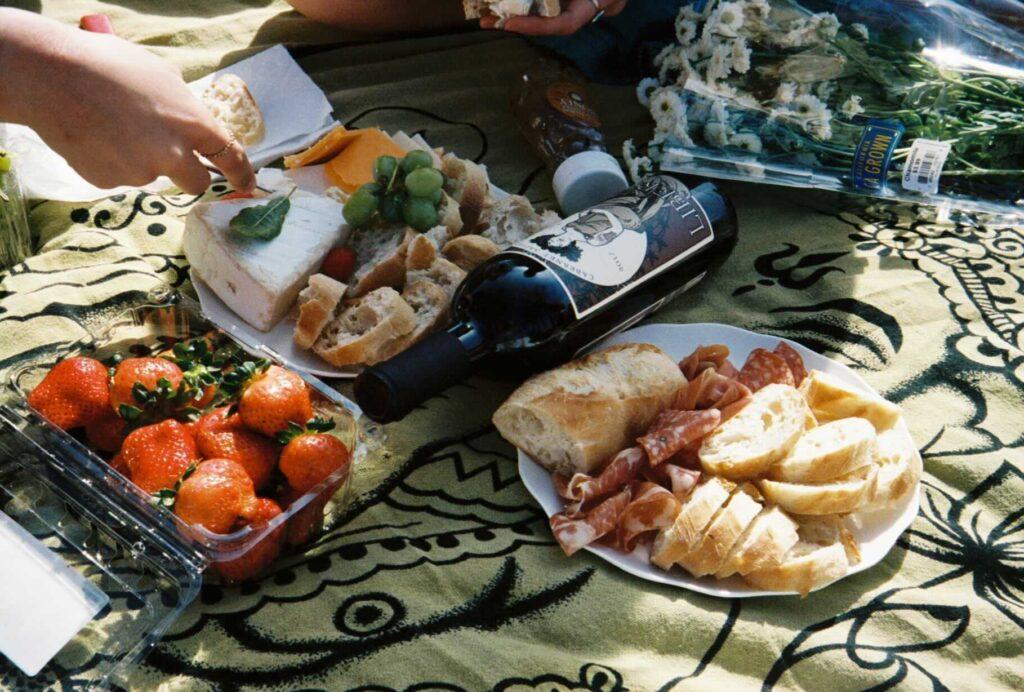The resurgence of film photography, headed by a new generation raised on touch screens and used to immediate gratification, harkens back to a time before every moment could be captured instantly. The older and slower process of film photography has allowed for a new appreciation of the finer moments in life.
Some students have traded their iPhones’ rapid-fire burst function for point-and-shoot film cameras to more tangibly commemorate their experiences. The popularity of film has expanded on social media over the last few years, spurring new hobbies; at the same time, some students have been cultivating their interest in film for much longer.
Revelling in the Fun of Film
Yasmine Barbѐs (SFS ’22) and Giulia Melidoni (MSB ’22), who have co-curated their film-dedicated Instagram account @gysposable since they both started to shoot on film in 2017, credit the authenticity of film shots and the spontaneity a film can provide with endearing film photography to generations of photographers.
“We both love this idea of living in the moment and having to wait to see how the pictures have turned out, Melidoni wrote in an email message to The Hoya. “The feeling of receiving all your developed pictures is really amazing. You definitely don’t feel this excitement when taking pictures with a digital camera. Taking pictures on a film camera just feels much more special and valuable.”
Lexie Meger (NHS ’23) has been refining her film photography skills since high school. She was influenced by her sister’s interest in photography and purchased a vintage film camera at a thrift store in 2018. From then on, her interest in film photography grew.
Meger, an artist, exclusively uses film to photograph the subjects for her paintings, citing film’s excellent ability to capture the vibrant colors of each scene. She encourages all of her friends to get involved in film photography because of the quality of the photos and the experience.
“The colors are so much richer. I know it sounds kind of dorky, but it really captures the moment. When I take a film picture, I feel like I am able to show how I feel and like how I was in that moment, whereas I’m like taking a picture of my phone, it’s kind of distanced,” Meger said in a Zoom interview with The Hoya.
Similarly, Gwen Barry (SFS ’23) found her passion for film in a casual social setting with her friends and has been obsessed ever since.

Some of Barry’s favorite film photos she has taken chronicled her time at Georgetown University and a semester of virtual learning spent in Chicago with her friends. In the current age of immediacy and unlimited consumption, Barry believes film photographers prefer the strong nostalgia these images carry.
Film not only appears timeless, but it also initiates a more reflective experience for its owners, according to Barry. In the future, she hopes to further explore film with intentional projects.
“I think there is a fun element in having it look a little bit older, and I think it’ll be fun to look back on when I’m old and reminiscing with my friends, because I think it’ll look cooler than a regular photo that I just took of myself,” Barry said in a Zoom interview with The Hoya.
Technical Aspects
The beauty of shooting film photography is found in the imperfections, such as light leaks, which make for more intriguing photographs, according to Dana Dveris, a film photographer in Los Angeles, who formerly worked at legendary film company Kodak.
“I think what makes film exciting is how unexpected and unpredictable the outcome is. You never know what your images are going to look like until you get them back from the lab. I am almost always surprised by light leaks or sometimes accidental double exposures,” Dveris wrote in an email to The Hoya.
An accidental double exposure is the overlay of two photos that were intended to be separate, which occurs when the film is not advanced before taking the second photo. A light leak is a streaked effect on a photo that occurs when the film is exposed to more light than intended. These technical accidents are a part of the process, according to Dveris.

Like Meger, Dveris agrees that film photography produces more vivid colors and captures movement in ways that digital photography cannot match.
“I rarely have to color correct my film like I do my digital photography because of how much more vibrant the colors are,” Dveris said. “Film captures real life better than digital. Not having to color correct makes it feel like a more authentic reflection of what I see.”
While Meger, Barry, Barbѐs and Melidoni may all be self-taught film photographers, Georgetown does offer courses in film photography for those who want more direction. Georgetown photography professor Bruce McKaig, whose freelance work has been internationally acclaimed and exhibited, finds that the time-consuming process of film photography enriches the artist’s experience.
“This is a love-hate thing, that’s for sure,” McKaig said in a phone interview with The Hoya. “There’s some of it that is resistance and it’s frustration, but some of it is acknowledging, ‘If I want to get this right, I have to slow down.’”
Challenges in This Medium
The aesthetic benefits to using film photography do not come without their challenges, monetarily or environmentally, especially for students. The lengthy production process of film photography can sometimes be a challenge for film photographers. Rolls of film holding 24 to 36 photos each are often developed and scanned through a third party once shot.
The wait time for the final product can be one to two days at a specialty store with a darkroom on site or more than a week from a chain store. However, this wait is often worth it. Artists are often surprised by the moments captured on film that were previously forgotten.
This delayed gratification gives the photography a nostalgic quality that would not have otherwise been fully realized if simply digitally shot. Barry finds the wait to be one of the most rewarding aspects of using film.
“I think one of the really fun things about it is that you don’t see the photos immediately. … You really don’t remember what’s on them or what you took photos of, so it’s always fun to just see all the memories that you recorded like three months ago,” Barry said.
The cost of the film, development and scanning, not to mention the cameras themselves, is more difficult to romanticize. Because of the high costs of the hobby, young photographers have cheekily coined the hashtag #shootfilmstaybroke, which boasts nearly 1 million posts on Instagram.

Meger struggles to rationalize the cost and delicacy of film cameras but admits that it increases her cost consciousness.
“It’s kind of a stupid hobby to have because it just drains your bank account,” Meger said. “It makes you think: Am I gonna really spend like two dollars on this one picture to develop it?”
The cost associated with using film can also be viewed as the source of its value; by necessitating selectivity, the high cost of film can actually improve one’s photography. Barry often tries to strategically bundle supplies to save money.
“I tend to develop a couple of rolls together just because it’s cheaper to not mail it out every single time that I use one roll of film,” Barry said.
Besides incurring high costs, developing film can negatively impact the environment. Disposable cameras in particular can create excess waste.
Faced with the environmental challenges of disposable cameras, Eloise Owen (SFS ’22) has found that more technical equipment can be a solution. In order to minimize environmental disruption, Owen says she has personally opted for regular film cameras instead of disposables to take her shots.
(Full Disclosure: Owen previously served as a deputy design editor for The Hoya.)
“After realizing how expensive they are but also how bad they are for the environment, with the environmental toll of all that plastic and then you just throw it away — that’s really when I got into buying my own, because it’s way better quality than a disposable camera, and it’s just a lot better,” Owen said in a Zoom interview with The Hoya. “There is an environmental toll that I think people should be aware of when they’re trying to get into film.”
Despite the drawbacks of film, professor McKaig feels the gratification film provides students is unparalleled.
“One thing, for instance, is when a student is standing, holding a 3-foot-long wet strip of negatives, and almost doing backflips they’re so excited, and share specifically with me, ‘Professor, this is the first thing I ever made with my hands,” McKaig said.
Film photography not only captures special moments, but it also acts as a form of entertainment itself. For Meger, bringing a film camera on a night out with her friends can make her experiences unforgettable.
“It kind of makes whatever I’m doing more of an event, like, ‘Oh. I’m gonna bring my film camera,’ and everyone’s like, ‘Oh, I’m gonna dress nice,’ and you know we’re gonna do something cute,” Meger said. “So that’s why I started really getting into it, because it made people feel happier and more excited to do something.”














